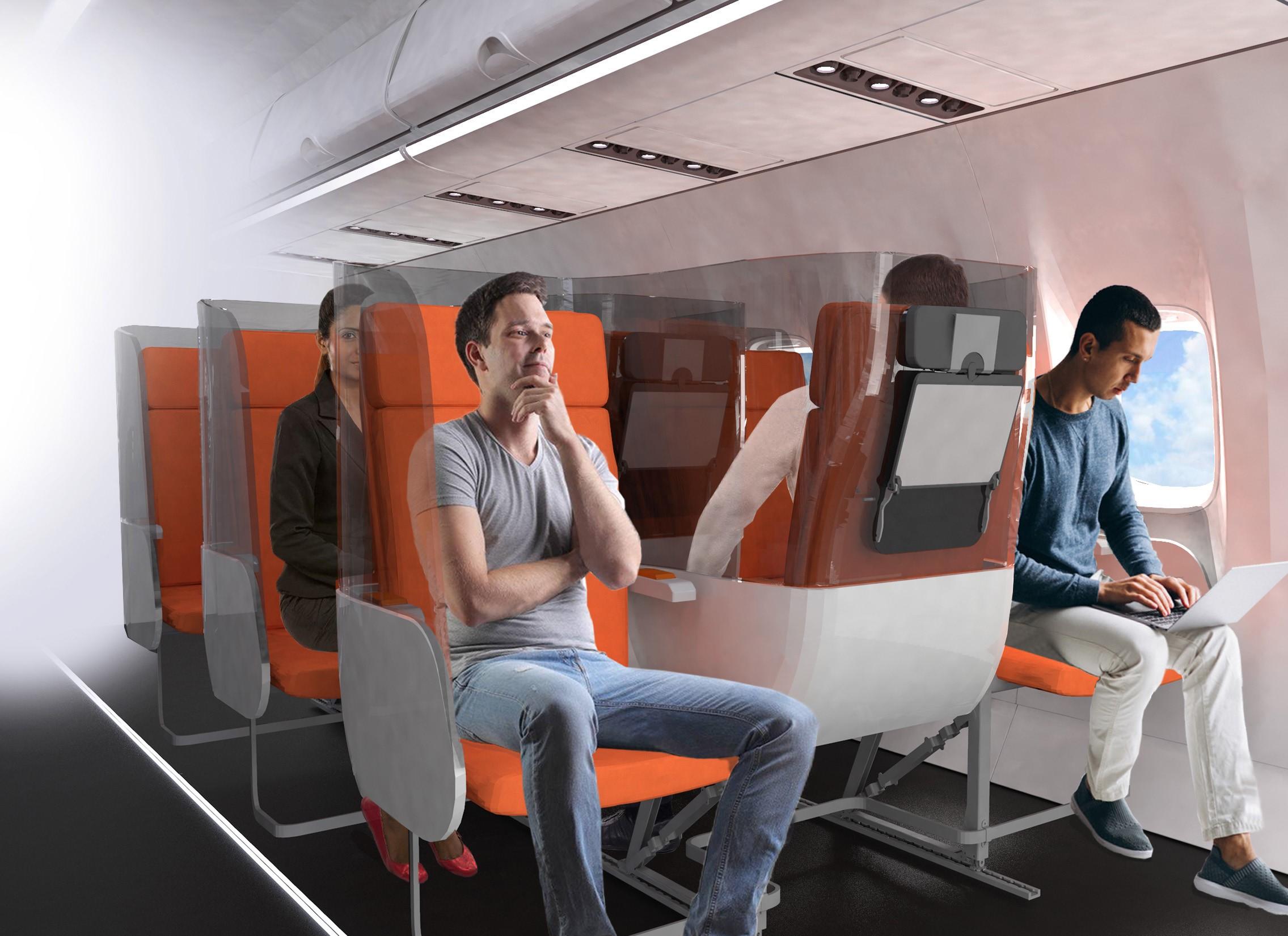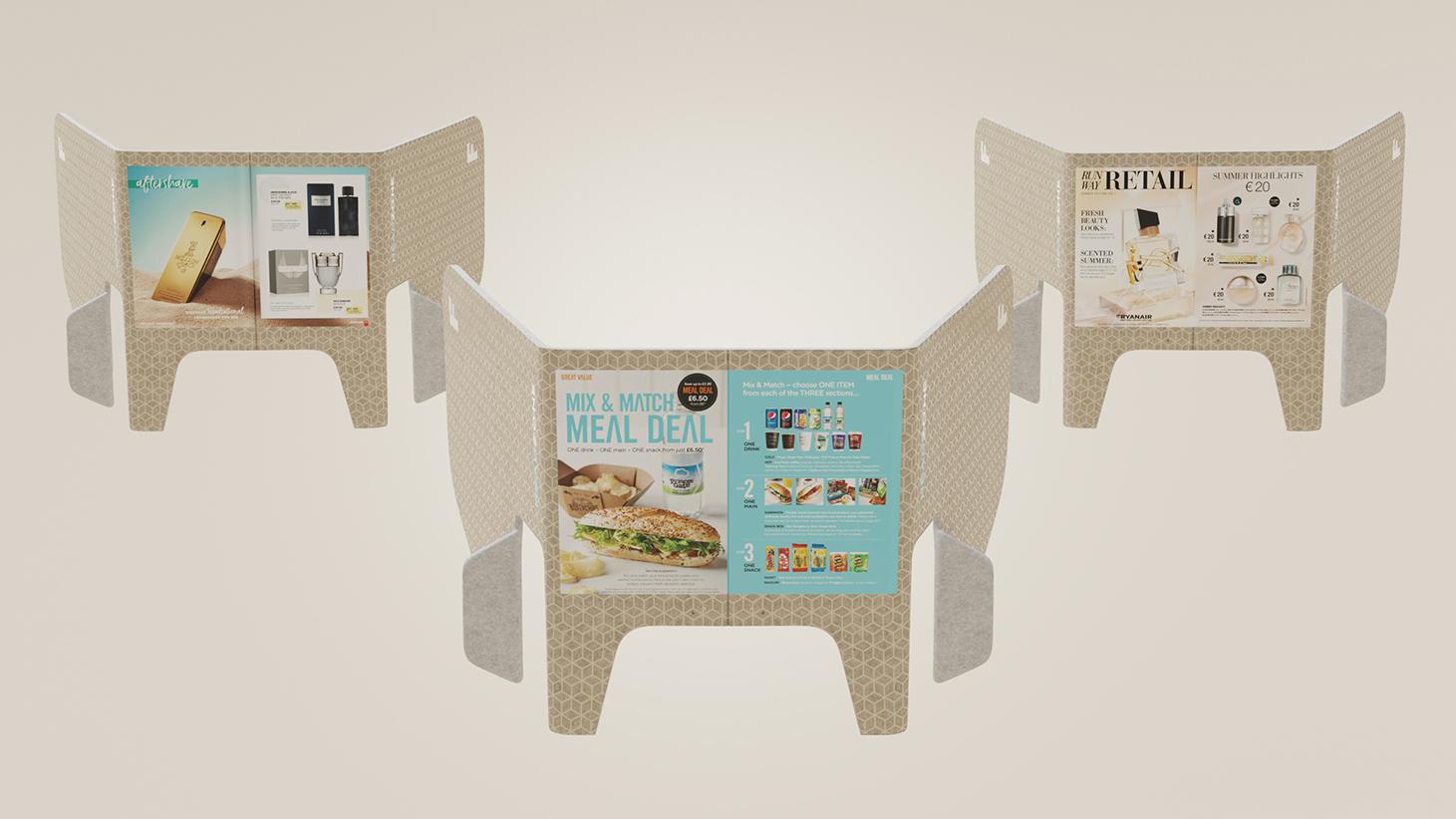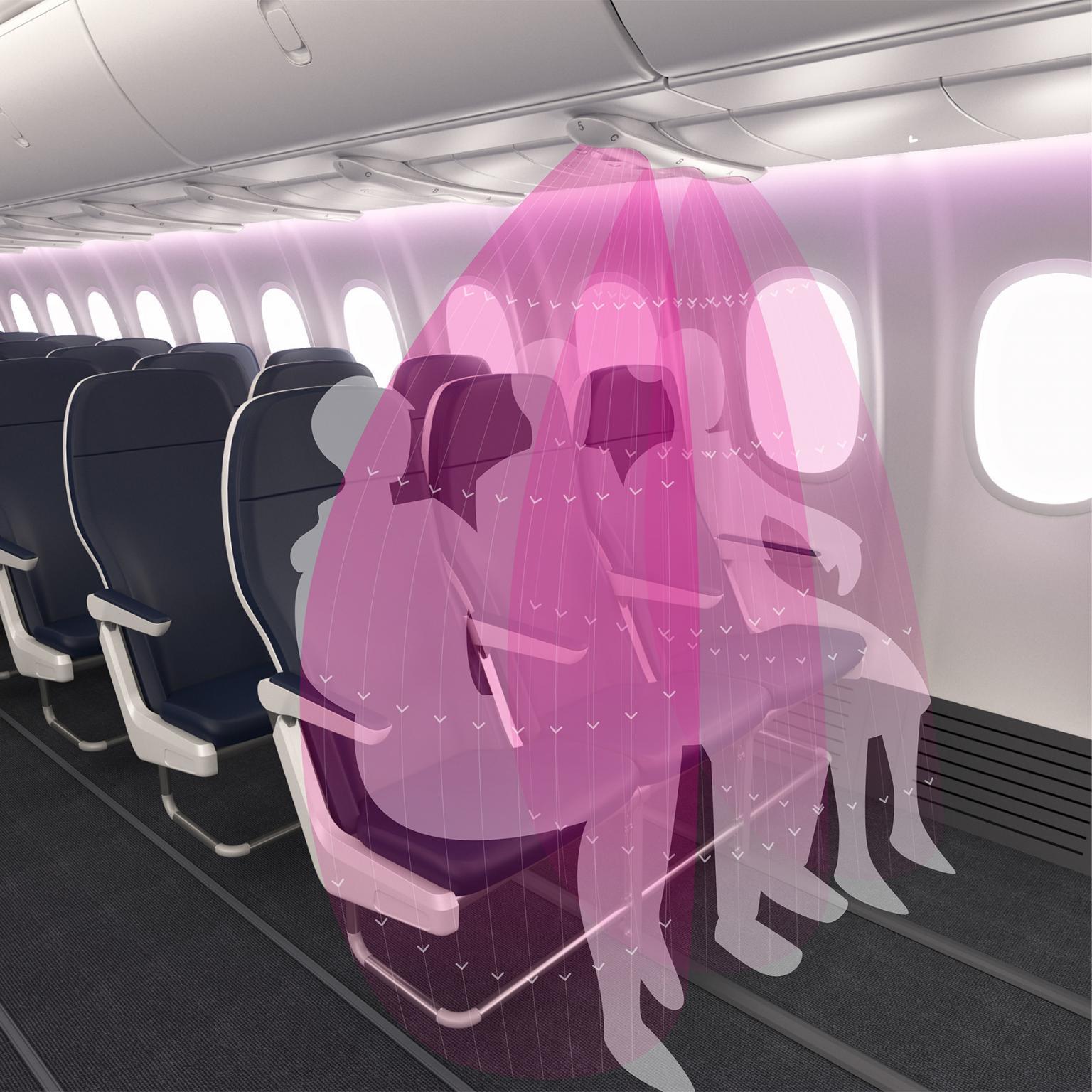
As the airline industry quickly puts into place increased health and hygiene protocols to boost passenger confidence, cabin interior manufacturers are innovating designs to give added protection to COVID-19-wary travelers.
Cabin designers are targeting economy class, where passengers are packed in tightly to give higher load factors.
As airlines slowly return to the skies, they seem to be willing to give up that middle seat temporarily, but analysts have already said it is not sustainable in the longer term.
Ah, that dreaded middle seat: Leaving it empty allays physical distancing concerns, enabling passengers to feel safer to fly after months of isolation, lockdowns and quarantines, but airlines need to fill that middle seat to keep load factors in a profitable range.
Right now, cabin design innovators are putting everything on the table—from removable cardboard foldout “seat wings” to all types of plastic shields and barriers, and even backward-facing middle seats.
London-based Factorydesign has come up with an innovation for passengers to have some control over their personal space in high-density economy cabins.
HeadZone is a foldable, cardboard product that slips over the back of the seat. Foldout ears reinforce the side head supports and provide the flexibility required for different seatback thicknesses. As a bonus, it can also be easily recycled.
According to Factorydesign, HeadZone would be purchased either by the passenger within the terminal or supplied by the airline as part of an onboard flight purchase.

Credit: Factorydesign
“There are opportunities for branding, sponsorship and high-impact advertising, which may also allow companies to provide it free to customers,” the company states.
“This is not about changing the inherent nature of the cabin interior but creating a considered personal add-on—giving the passenger some control over their personal space,” the company said.
Jamco America announced the new leather-wrapped Soft Divider—a soft eyebrow-type hanging divider with a simple design that enables maximum seat density—that is designed for narrowbody, single-aisle aircraft.
“The new Jamco Soft Divider has an increased surface area … to allow additional separation from the rear passengers and the forward passengers,” Jamco America director of sales and program management Kristi Dutson said. “As a result, the spread of germs between cabin classes is reduced, increasing passenger safety.”
Italian aircraft-interiors specialist Aviointeriors unveiled two social-distancing seat designs, which it said could be available within a short timeframe.
The two designs include a booth-like transparent shield that can be retrofitted to existing seats and a new economy-class layout, with a backward-facing middle seat.
Aviointeriors said the “already designed and industrialized solutions” can be supplied in “a very short time,” even if airlines require customization.
The retrofit shield kit, branded as Glassafe, acts as a transparent barrier between passengers, without incumbering seatback amenities, such as tables, magazine pockets and coat hooks.
Meanwhile, the Janus seat—named after the two-faced Roman god—is a row of three economy seats with the middle seat reversed. This design also comes with a protective shield, maximizing passenger separation.
Market outlook
The million-dollar question is: With airlines facing unprecedented financial losses when they were forced to ground up to 90% of their fleets for several weeks, how interested are they in making these types of investments? And are they really necessary for the long term?
Aircraft interiors developer Tapis Corp. sales director Matthew Nicholls told ATW following the recent Passenger Experience Conference webinar, “The Outlook for Aircraft Interiors,” a virtual series is organized by Aircraft Interiors Expo (AIX) organizer Reed Exhibitions. He does not think the economics truly support physical shields in the center passenger place, especially when other technologies exist that can support the safe re-introduction of the middle seat place.
“We’ve seen a lot of these devices,” he said. “At current count, we’ve been asked to quote for materials on three of them and there are another three to four in development. They range from the Aviointeriors’ seat shields to the headrest divider from Factorydesign.”
In addition, he said AeroFoam Industries launched its Sentinel design and Safran its Interspace Lite seat divider product.
“The reason for the push is based on the belief that you cannot maintain a socially acceptable distance of 6 feet between passengers as the typical seat width is 18 inches,” he said. “While this is true, there is also a balance from the airlines regarding the need to invest in something likely to be, at best, a short-term measure.”
According to Nicholls, when you look at the evolving COVID situation, a vaccine could be available by Q4 this year.
“At that point, the need effectively disappears for central seat blocking,” he said. “In addition, there is currently not a want or desire from the airlines to block the middle seat in anything but the shortest term possible for revenue generation and densification reasons. The other view is that it might not be needed at all.”
In the immediate term, airlines are ramping up cabin hygiene to boost passenger confidence in flying again.
A Southwest Airlines spokesman said the Dallas-based carrier is focused on “executing our enhanced protocols and cleaning procedures and has no current plans for modifying our aircraft interiors.” Southwest also said it has extended its commitment to leaving middle seats open from July 31 through at least Sept. 30.
A United Airlines spokesperson told ATW: “Our current focus is on enhanced cleaning procedures to keep our customers and crew safe. We’ve partnered with experts at Clorox and Cleveland Clinic to leverage their expertise in guiding our practices to ensure the highest levels of cleanliness.”
Clearing the air
Beyond cabin cleaning protocols and physical barriers, Nicholls believes technology innovation focusing on improving cabin ventilation may be a more commercially viable solution instead of products enabling physical distancing.
“The new AirShield from Seattle-based technology company Teague, by contrast, works by modifying the existing airflow and directs droplets from passengers downward to prevent the spread of the virus,” Nicholls said.
According to Teague, the AirShield is a single 3D-printed component that fits directly on to the passenger service unit above the seats. “The simplicity of the design means that with just one grill per seat row, the 60 grills required to fit a narrowbody aircraft could be fitted overnight as a service bulletin, something other solutions so far haven’t been able to address,” the company said.

Credit: Teague
While the product itself is in early-stage prototyping and engineering development, Teague stated on its website that its simplicity is geared for “rapid deployment to help restore confidence in air travel during a time of increasing uncertainty.”
Nicholls pointed out, “The [AirShield] project involved extensive computational fluid dynamic research along with the engineering of a cough and sneeze in terms of velocity, direction and how long it remains on the surface of the various materials in the onboard environment. When you combine this technology with our anti-microbial surface technology in the seat cover, the risk of viral transmission is mitigated to low enough levels that passengers can sit next to each other without risk.”
Which technology—or combination thereof—that proves to be the one to mitigate the most COVID-19 risk remains to be seen as the industry navigates through this unprecedented time.





